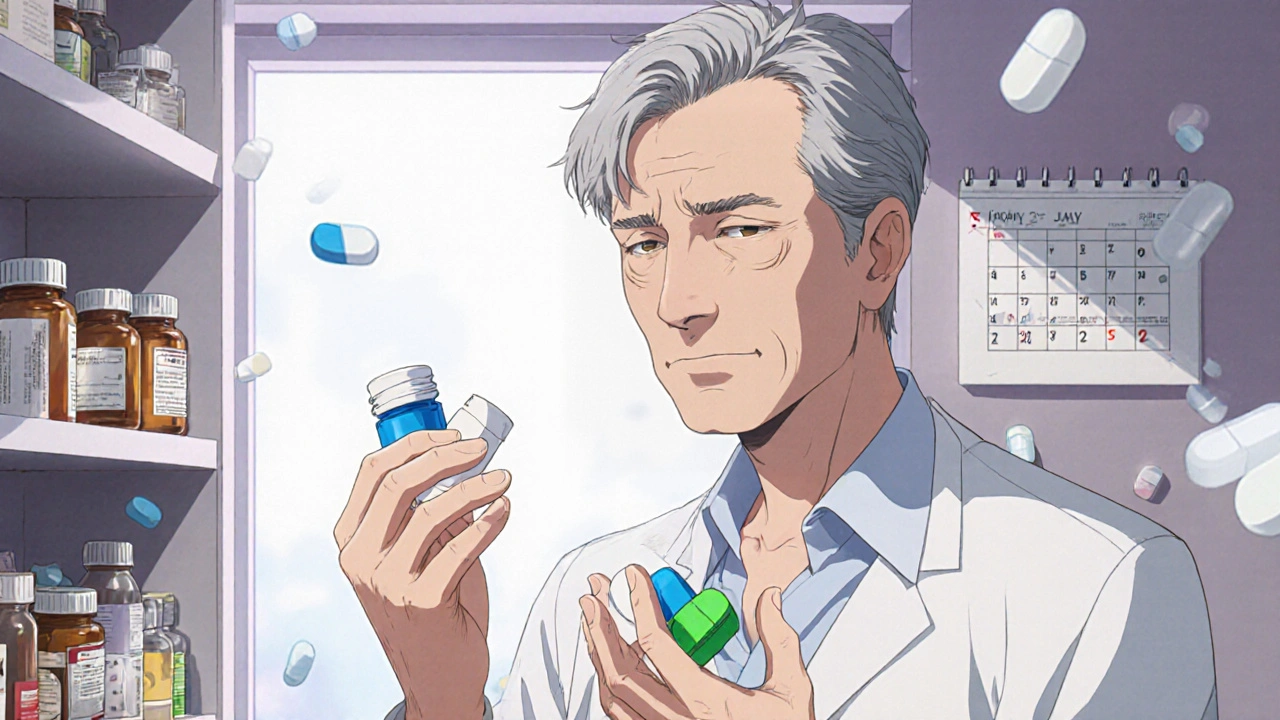Pill Burden: How Too Many Medications Hurt Your Health
When you’re managing multiple health conditions, it’s easy to assume that more pills mean better care. But pill burden, the cumulative effect of taking too many medications at once. Also known as medication overload, it’s a silent problem that increases falls, confusion, hospital visits, and even death—especially in older adults. This isn’t just about counting tablets. It’s about how those pills interact, how they change your body, and how hard they make it to stick to your plan.
Pill burden isn’t just a number—it’s a chain reaction. Take polypharmacy, the use of five or more medications regularly. It’s common in people with diabetes, high blood pressure, arthritis, and depression. But when you add a new drug for a new symptom, doctors often don’t step back to ask: "What are we removing?" That’s how side effects pile up. One pill causes nausea, so you get another for it. That one messes with your kidneys, so you need a third to protect them. Before long, you’re taking eight pills a day just to manage the side effects of the original five. And if you miss one? The whole system stumbles.
It’s not just about quantity. drug interactions, when medications compete or clash inside your body, turn simple routines into minefields. Think of your liver as a busy airport. CYP450 enzymes are the air traffic controllers. If you’re on statins, antidepressants, or blood thinners, your liver’s already overloaded. Add a new herb, OTC painkiller, or even grapefruit juice, and the system crashes. That’s why so many emergency visits happen not from the original disease—but from the meds meant to treat it.
And then there’s medication adherence, how well you actually take your pills as prescribed. When you have a drawer full of bottles with different times, doses, and instructions, it’s no surprise people skip doses or double up. A 72-year-old with heart disease, arthritis, and high cholesterol might have 12 pills a day. Some in the morning, some at night, some with food, some without. It’s confusing. It’s exhausting. And it’s not sustainable. Studies show that people taking more than four daily medications are twice as likely to miss doses—and that’s not because they’re careless. It’s because the system is broken.
There’s a better way. It starts with asking: "Do I really need this?" Many pills are prescribed out of habit, not necessity. A simple review with your doctor or pharmacist can cut your daily count by 20% or more—without losing any benefit. It’s not about stopping meds. It’s about stopping the ones that don’t belong. The posts below show real examples: how antidepressants cause emotional blunting, how antibiotics trigger yeast infections, how GLP-1 drugs make you nauseous, how blood pressure pills can spark gout flares. These aren’t rare side effects. They’re predictable outcomes of too many drugs, too little oversight. What you’ll find here isn’t just theory. It’s the kind of practical, real-world insight you won’t get from a one-minute office visit. This is your guide to cutting through the clutter—so you can take only what you truly need, and feel better doing it.
De Facto Combinations: Why Some Patients Take Separate Generic Pills Instead of Fixed-Dose Combos
Many patients take separate generic pills instead of fixed-dose combinations to save money or get precise dosing. But this practice carries hidden risks. Learn when it's safe-and when it's not.

